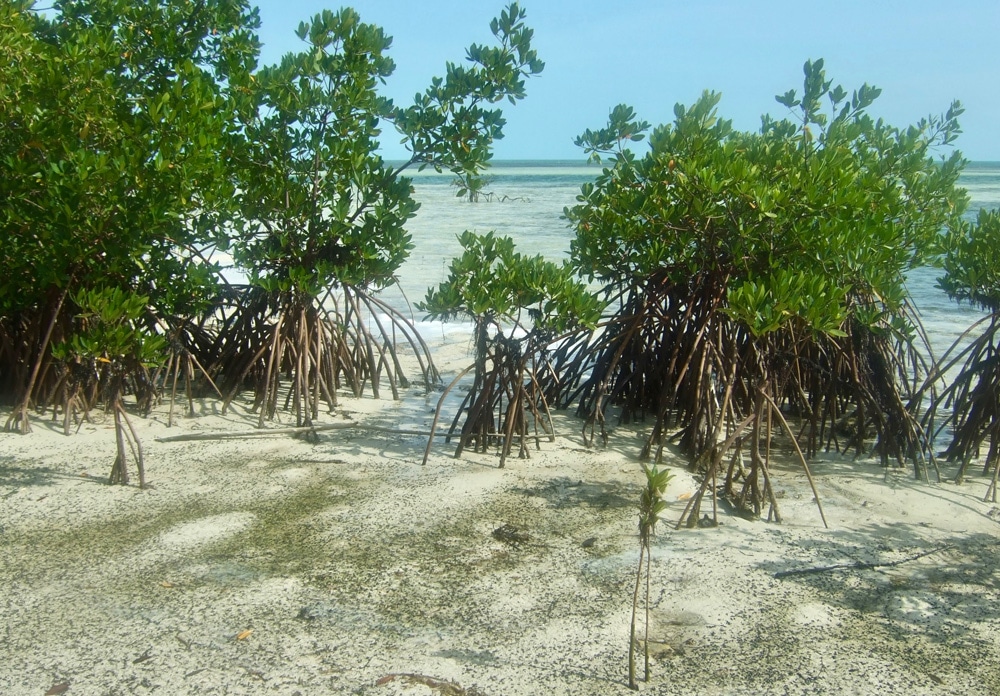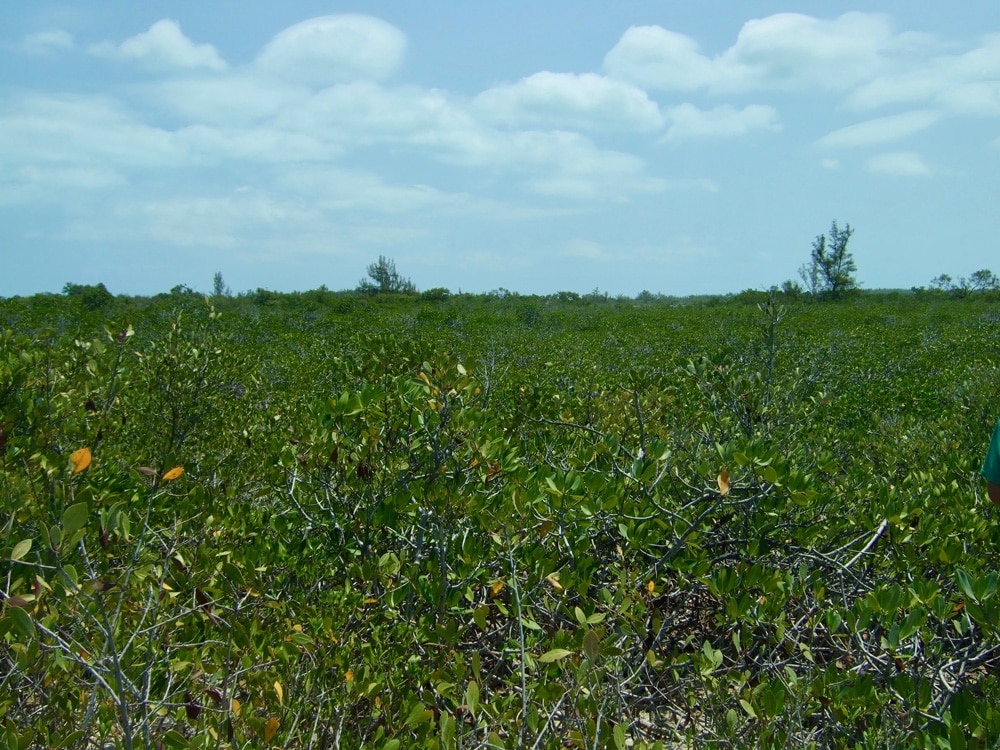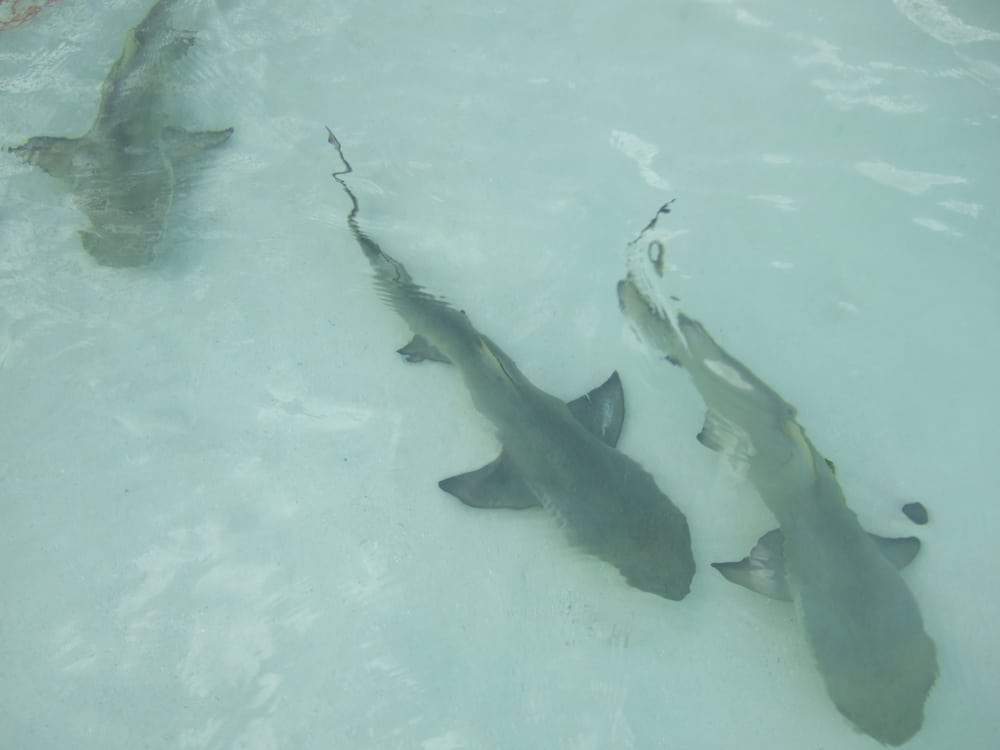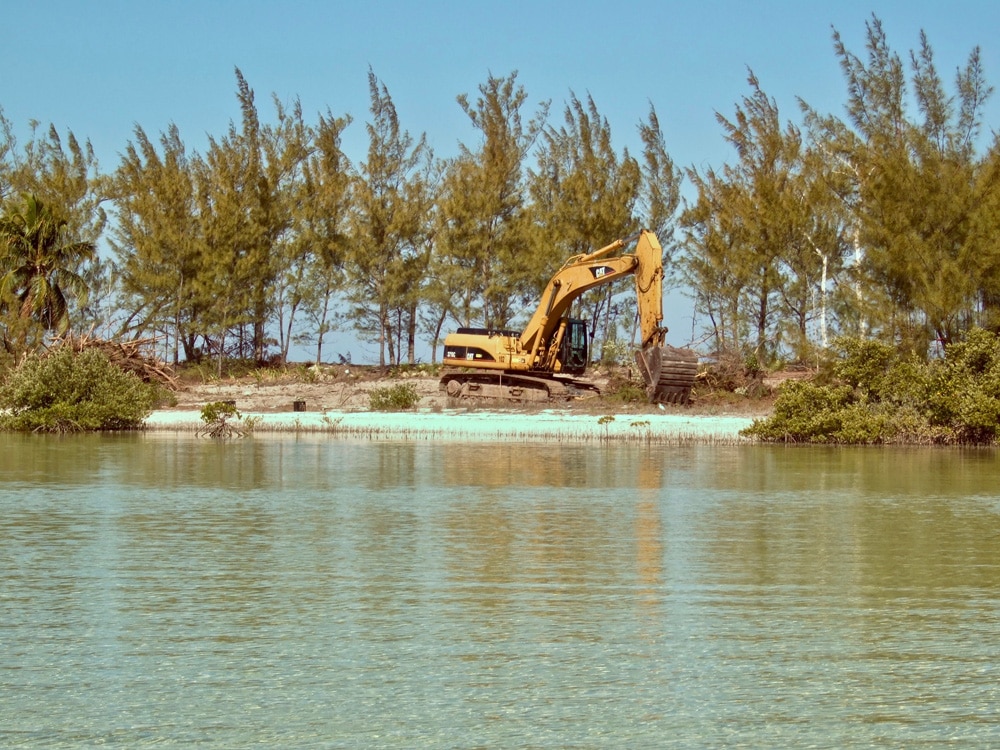Marine Life & Conservation
Marvellous mangroves!
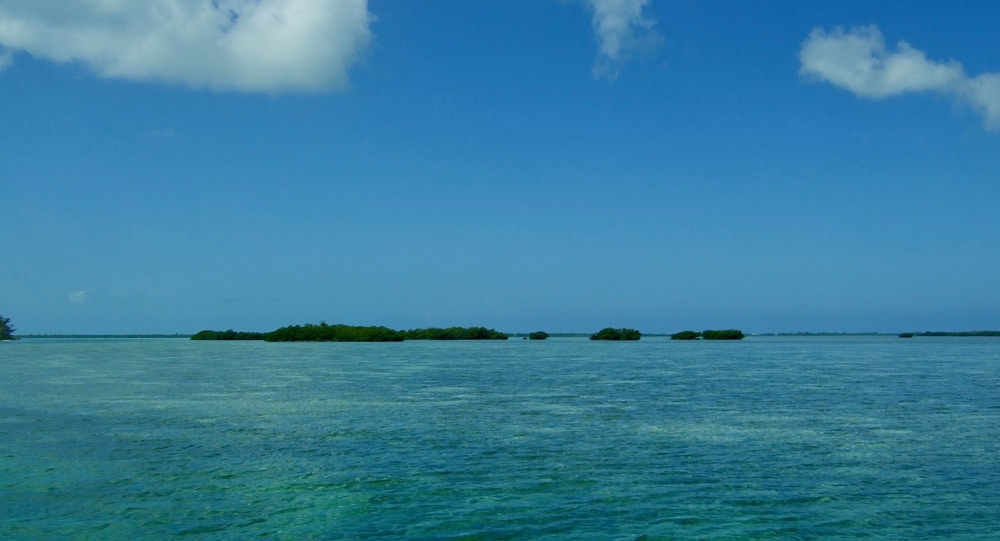
As divers, I’m guessing most of us love diving on coral reefs; if those reefs are pristine and full of life, even better! Coral reefs are incredible and diverse ecosystems, but they are strongly linked and interdependent on three other ecosystems: seagrasses, mangroves and rivers. Here I’m going to discuss mangroves, and why they are one of the most important ecosystems to conserve in order to have beautiful, healthy coral reefs. Hopefully I can convince every diver to love them as much as I do and to explore our options in protecting these habitats. Though historically, mangroves were viewed as insect filled, tangled and muddy swamps and shrub forests, we have become increasingly aware of how diverse and special this amazing habitat is for both wildlife and protecting our shorelines from extreme weather events.
So, what is a mangrove?
Mangroves are trees and shrubs that love very warm, wet conditions and grow in saline coastal habitats in tropics and subtropics. You have probably seen them fringing islands and coastlines when diving on coral reefs. They can often be recognised by their dense tangle of prop root that make the trees look like they are on stilts. Mangroves are unique because they can live in areas with low oxygen soil and where the water has a variable salt content. As they live in the coastal intertidal zone, the roots can cope with being flooded twice a day. They are flowering plants, where the upper trunk, branches and leaves live above the water line and the lower trunk and roots can live below.
There are over 80 different species of mangrove tree and several more species associated with mangroves for their ability to tolerate the coastal intertidal zone, such as buttonwoods. The Asia-Pacific region has the most diversity and the largest mangrove region in the world is The Great Sundarbans in Bangladesh (a UNESCO World Heritage Site). Having said this, there are three main dominant types of mangroves in a mangrove forest; red, black and white.
Red mangroves are evergreen trees that can grow to 25m, often less. They live closest to the water and elaborate arching prop roots and red bark colour make it very easy to identify. They are salt excluders; the roots contain a waxy substance that helps keep the salt out. If any salt does get through, it is deposited in older leaves and the tree sheds them. They produce propagules (seeds) that grow from the tree, then detach and stick into the mud or float away somewhere new.
Black mangroves live between red and white mangroves. The easily identifiable roots (pneumatophores) stick up vertically from sediment and are specially designed to take in oxygen, acting like snorkels in the water. Black mangroves have longer pointed leaves which are often covered in salt crystals and dark scaly bark. They produce seeds which germinate while still connected to the parent tree, so trees are often grouped together.
White mangroves live closest to the land in the back portion of the mangrove swamps, where they are unaffected by tidal inundation, except on spring tides. With no visible aerial roots, they may seem harder to identify, but the leaves have two glands at the base which excrete the salt taken in by the roots, so the leaves are often coated with white salt crystals. The salt crystals give this species its common name and the bark is lighter in colour.
Why should we love them?
Mangroves are ecosystem engineers, meaning they form their own ecosystem and provide habitats for other species, but they also have lots of benefits to us:
- Trapping sediments
Mangrove forests have huge root systems that slow the movement of tidal waters, making the sediment settle out of the water, the roots then trap this soft sediment and build up the muddy bottom. In dense forests, mangroves have created entire islands.
- Reducing wave action
The network of sediment-trapping roots stabilize the coastline, reducing erosion from wave and tidal action and providing a buffer, an important defence for costal ecosystems and communities from tropical storms and their storm surges.
- Important nursery grounds
Mangroves provide an intricate network of nursery habitat for many fish and invertebrate species, which move out to coral reefs and other ecosystems when they mature. The mangroves provide a safe haven for juvenile fish, including commercially important fisheries species, which seek food and shelter from predators. Many shark species, including lemon sharks, bull sharks and blacktip sharks, spend their juvenile years in mangrove forests.
- Rich biodiverse ecosystems
In addition to being a great habitat for the young of reef and pelagic species, mangroves are a primary habitat for mature individuals of many species of marine animal, amphibians, reptiles, seabirds and waterfowl. Mangroves are always teeming with life!
For anyone who enjoys diving on coral reefs, it is important to be aware that coral reefs and mangroves have a symbiotic relationship – the reefs protect the coast from being eroded by the sea, blocking the power of the open ocean and the mangroves trap the sediment washed from the land that would smother and kill the reef. Species depend on both ecosystems for different life stages and both ecosystems provide coastal protection and commercial value through fish stocks and tourism for us. Mangroves are one of the most valuable ecosystems in the world.
Threats
Unfortunately, like coral reefs, mangrove forests are under threat and are being lost at a very rapid rate. Clear cutting for aquaculture, mainly shrimp farming and coastal developments, such as marinas, housing and hotels is a major issue, as is harvesting for wood.
It is estimated that at least one third of all mangrove forests have been lost in the last few decades. Without protection, they may disappear in areas that cannot afford the ecological or economic loss. This in turn negatively effects our beloved coral reefs, which are already struggling with pollution, sedimentation, climate change, ocean acidification, overfishing and destructive commercial practices. After that thoroughly depressing paragraph, lets move onto the positive bit…
What can we do to help?
- Help support and encourage more protected areas. If you are travelling in an area with a protected area, donate or take a guided tour from rangers.
- Make sustainable choices; shrimp farming is a leading cause of mangrove habitat loss, know where your food is coming from and whether you should be making that choice. If you don’t want to give up a food, there is usually a sustainable option – it may cost a little extra, but it will be completely worth it!
- Spread the word! As ever, education is always important and particularly in countries with mangrove forests; many NGO’s work in schools to educate the next generation, which we can support through donations. However it isn’t just about spreading the word in other countries, the more people everywhere learn about the value of mangrove forests, the more drive there will be to protect this amazing habitat!
Visiting the mangroves
So, if you are now totally hooked on marvellous mangroves and want to go and see the wildlife for yourself, there are now many places that will take you snorkelling or on kayak tours. By picking an organisation that donates to mangrove protection or does educational programmes you get to help out while having a great time!
Blogs
The Ocean Cleanup Breaks 10,000,000 KG Barrier

The Ocean Cleanup, the global non-profit project, has removed a verified all-time total of ten million kilograms (22 million lbs.) of trash from oceans and rivers around the world – approximately the same weight as the Eiffel Tower.
To complete its mission of ridding the oceans of plastic, The Ocean Cleanup uses a dual strategy: cleaning up the Great Pacific Garbage Patch (GPGP) to remove the plastic already afloat in the oceans, while stopping the flow of plastic from the world’s most polluting rivers.
Through cleaning operations in the GPGP and in rivers in eight countries, the cumulative total of trash removed has now surpassed ten million kilograms. This milestone demonstrates the acceleration of The Ocean Cleanup’s impact, while underlining the astonishing scale of the plastic pollution problem and the need for continued support and action.
While encouraging for the mission, this milestone is only a staging point: millions more tons of plastic still pollute our oceans and The Ocean Cleanup intends to continue learning, improving and innovating to solve this global catastrophe.
This announcement comes as governments from around the world meet to continue negotiations to develop a new legally binding instrument to end plastic pollution at INC4 in Ottawa, Canada. Representatives of The Ocean Cleanup will be in attendance and the organization will be urging decision-makers to collaborate towards a comprehensive and ambitious global treaty which addresses plastic at all stages of its life cycle and in all marine environments worldwide, including in areas beyond national jurisdiction.
It is encouraging to see that the need for remediation is reflected in the various options for potential treaty provisions. It is essential that the final treaty contains clear targets for the remediation of legacy plastic pollution, and reduction of riverine plastic emissions.
Tackling plastic pollution requires innovative and impactful solutions. The treaty should therefore incentivize the innovation ecosystem by fostering innovations that make maximal use of data, technology and scientific knowledge – such as those designed and deployed by The Ocean Cleanup.
‘After many tough years of trial and error, it’s amazing to see our work is starting to pay off – and I am proud of the team who has brought us to this point.’ said Boyan Slat, Founder and CEO of The Ocean Cleanup. ‘While we still have a long way to go, our recent successes fill us with renewed confidence that the oceans can be cleaned.’
The Ocean Cleanup was founded in 2013 and captured its first plastic in 2019, with the first confirmed catch in the GPGP coming soon after the deployment of Interceptor 001 in Jakarta, Indonesia. After surpassing one million kilograms of trash removed in early 2022, the non-profit project has since progressed to the third iteration of its GPGP cleaning solution, known as System 03, and a network of Interceptors currently covering rivers in eight countries, with more deployments set for 2024.
About The Ocean Cleanup
The Ocean Cleanup is an international non-profit organization that develops and scales technologies to rid the world’s oceans of plastic. They aim to achieve this goal through a dual strategy: stemming the inflow via rivers and cleaning up the legacy plastic that has already accumulated in the ocean. For the latter, The Ocean Cleanup develops large-scale systems to efficiently concentrate the plastic for periodic removal. This plastic is tracked and traced through DNV’s chain of custody model to certify claims of origin when recycling it into new products. To curb the tide via rivers, The Ocean Cleanup has developed Interceptor™ solutions to halt and extract riverine plastic before it reaches the ocean. Founded in 2013 by Boyan Slat, The Ocean Cleanup now employs a broadly multi-disciplined team of approximately 140. The foundation is headquartered in Rotterdam, the Netherlands.
For more information, visit: theoceancleanup.com and follow @theoceancleanup on social media.
Marine Life & Conservation
Steve Backshall to headline Shark Trust’s flagship event: For the Love of Sharks

Join a host of amazing, shark loving, speakers including Steve Backshall and the Shark Trust team for an evening celebrating shark conservation at the Royal Geographical Society in London this November.
Date: 29th November 2024
Time: 6-10pm
Location: Royal Geographical Society, London
Tickets: https://www.sharktrust.org/Event/flos24
The event will be a celebration of all things shark. Those lucky enough to get hold of tickets will hear from engaging guest speakers with a passion for sharks.
The line-up includes (*subject to change if unforeseen circumstances arise)
Steve Backshall: One of television’s busiest presenters, BAFTA award-winning wildlife expert Steve has been passionate about the wild world ever since he was young.
Steve’s impressive TV career has taken him all around the world, investigating a wide array of species and environments. Steve has filmed over 100 hours of children’s wildlife programmes with the BAFTA award winning Deadly 60 franchise and recently, with Sky Nature, for his new series ‘Whale with Steve Backshall’. He has been a patron for the Shark Trust for 10 years.
Simon Rogerson: is a photojournalist specialising in natural history, diving and the sea.
He is editor of SCUBA magazine, the official journal of the British Sub-Aqua Club. Simon started his career as a crime reporter but gravitated towards his ‘less depressing’ interest in underwater exploration, joining the staff of DIVE magazine in 1999. In 2005 he was named ‘Editor of the Year’ in the PPA’s Independent Publishing Awards. Simon also works as a freelance writer, contributing frequently to the Sunday Times and Telegraph, in addition to BBC Wildlife, Esquire, and a host of international diving magazines. He is the author of a book, Dive Red Sea, published by Ultimate Sports. Now based in Berkshire, Simon has been a Patron of the Shark Trust for 20 years.
More speakers to be announced soon. Head to the Shark Trust website to learn more.
The evening will also allow guests the final chance to see the Oceanic 31, shark art exhibition. Some of the artwork will be auctioned/raffled at the event, while the rest will be auctioned online to raise money for the Shark Trust Oceanic Programme.
For the Love of Sharks is an evening with something for everyone who is interested and fascinated by sharks. Join the Shark Trust, their Patrons, Trustees and Staff, along with a host of supporters for this celebration of shark conservation.
For more information or to buy a ticket: https://www.sharktrust.org/Event/flos24
-

 News3 months ago
News3 months agoCapturing Critters in Lembeh Underwater Photography Workshop 2024: Event Roundup
-

 Marine Life & Conservation Blogs3 months ago
Marine Life & Conservation Blogs3 months agoCreature Feature: Swell Sharks
-

 Blogs2 months ago
Blogs2 months agoMurex Resorts: Passport to Paradise!
-

 Gear Reviews4 weeks ago
Gear Reviews4 weeks agoGEAR REVIEW – Revolutionising Diving Comfort: The Sharkskin T2 Chillproof Suit
-

 Blogs3 months ago
Blogs3 months agoDiver Discovering Whale Skeletons Beneath Ice Judged World’s Best Underwater Photograph
-

 News3 months ago
News3 months agoPADI Teams Up with Wellness Brand Neuro to Drive Ocean Change and Create a Blue State of Mind
-

 Gear Reviews3 months ago
Gear Reviews3 months agoGear Review: Oceanic+ Dive Housing for iPhone
-

 News3 months ago
News3 months agoWorld’s Best Underwater Photographers Unveil Breathtaking Images at World Shootout 2023


